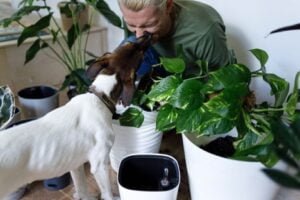13 Houseplants to Keep Away From Your Pets
13 Houseplants to Keep Away From Your Pets
Potentially Dangerous Houseplants
Indoor plants naturally purify the air while adding a decorative element to any home. However, if you have pets, your indoor plants could be potentially dangerous. There are many indoor plants that are poisonous to pets, including cats and dogs. While some are more harmful than others, it’s important to do your research before you bring a new plant home, especially if your pets like to get into trouble. Whether you want to add color to your apartment rental or start creating your own indoor garden, it’s important to do your research and understand which plants are harmful to your pet.
Knowing the types of houseplants that are toxic to pets can help you avoid bringing them home or give you the information you need to move your plants to a location where your dog or cat can’t get them. Here are common houseplants to keep away from your beloved animal companions.
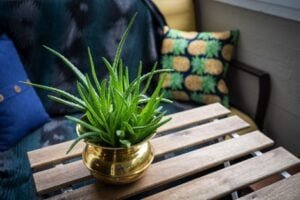
1. Aloe Vera
Aloe vera is a healing plant that’s great for minor cuts and soothing sunburns. Unfortunately, this plant is toxic to dogs and cats. Aloe vera contains purgatives that can result in vomiting and diarrhea in pets, so while a small plant might look cute on your end table, it’s typically best to keep it out of Fido’s reach.

2. Devil’s Ivy
Devil’s ivy makes a beautiful trailing plant, but it should be hung up away from pets. Devil’s ivy is incredibly toxic to dogs and cats and can result in foaming at the mouth, difficulty breathing, and vomiting. If your dog or cat consumes devil’s ivy, they should be taken to the nearest emergency vet as soon as possible.

3. Tomato Plants
Most people grow tomato plants in a garden or on their balcony, but you might bring your plant inside from time to time to take care of it. However, if you grow tomatoes, make sure to keep your pets away from them. While dogs and cats can consume ripened tomatoes, they should not eat any other part of the plant. The green parts of a tomato plant contain solanine, which is toxic to pets. Luckily, to be fatal, most cats and dogs must consume a large amount of, but it’s not worth the risk of having it in your home, especially if you’re not watching your cat or dog closely.
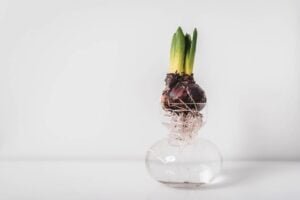
4. Chives
Chives are part of the onion and garlic family, all of which can be toxic to pets. Again, if you drop a small piece of onion on the floor, it likely won’t harm your pet, but it’s better to be safe than sorry and keep any chive plants away from cats and dogs. Chive poisoning can be fatal if not treated immediately, so keep your chives in your garden away from your dog.

5. Lilies
Lilies are a beautiful indoor and outdoor plant found in many bouquets. While some plants in the lily family are not toxic to pets, the peace lily is. Additionally, the stargazer and Easter lilies are toxic to cats and could be fatal if you don’t seek treatment immediately. In the case of peace lilies, your dog or cat may experience vomiting and have difficulty swallowing.
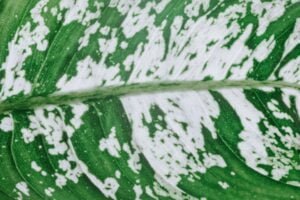
6. Dumb Cane
Dumb cane is one of the most common indoor plants because it’s fairly easy to maintain and has big, beautiful green leaves. However, it’s poisonous to dogs and cats, resulting in swelling of the mouth and tongue and difficulty swallowing. In some cases, it can cause difficulty breathing in dogs and cats and result in death, so if you’re going to keep this plant in the house, keep it away from your pets. Additionally, you can keep it outside and completely out of reach.
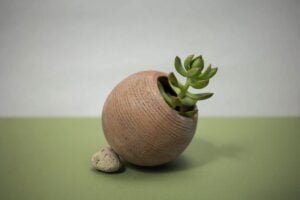
7. Jade
Jade is another popular indoor house plant because it’s easy to take care of and can live for many years. Unfortunately, while it makes a simple decoration for any home, it’s toxic to pets. Jade can cause vomiting and slow heart rate.

8. Chinese Evergreen
Chinese evergreen is a beautiful green leafy plant with a splash of color that can enhance any room. While Chinese evergreen isn’t toxic to cats, it’s poisonous to dogs and is a relative of the peace lily. Because it contains calcium oxalate crystals, it can cause difficulty breathing and swallowing, oral pain, swelling, and vomiting.

9. Elephant’s Ear
Elephant’s ear is another leafy plant that can irritate or burn your cat or dog’s mouth and tongue. They may also experience vomiting and drooling.

10. Asparagus Fern
The asparagus fern contains, which can cause pet dermatitis. Additionally, the berries that come from the fern are poisonous and can cause vomiting, diarrhea, and stomach pain.

11. Azaleas
Azaleas are beautiful bright shrubs that you can find outdoors, but they can come indoors, especially to create small bonsai trees. Unfortunately, azaleas contain grayanotoxin that’s toxic to animals. Symptoms include vomiting, diarrhea, and even coma if left untreated.
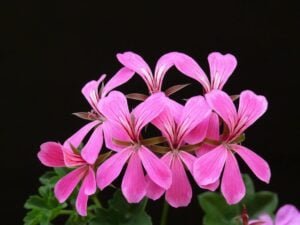
12. Geranium
Geranium is another common outdoor plant that many people bring indoors for a splash of color in the home. However, geranium contains geraniol and linalool, two chemicals that can cause dermatitis and vomiting in dogs and cats.

13. Tulip
Tulips are a springtime plant that many people receive as gifts, but they are poisonous to pets. Symptoms of tulip poisoning include stomach pain, nausea, vomiting, and liver damage.
Do Your Research Before Bringing Home Plants
If you have pets, you should do your research before bringing home plants that could be potentially dangerous. While it could be tempting to bring something home because it looks nice, consider your animals. While some dogs might not be prone to eat plants, they can still experience allergic reactions. Additionally, if you are going to bring home a plant that can cause your dog to have a negative reaction when ingested, keep the plants away from them by putting them high up on a bookshelf. Unfortunately, hiding plants from your cat can be difficult since cats are great climbers.
If you’d rather ensure your pets are safe at all times, you can find many plants that are safe for pets. Of course, you should also train your pets that eating plants is not good behavior. Even if plants aren’t dangerous for your pets, they should understand that they’re not for eating.

Author: Julia Olivas
Julia Olivas graduated from San Francisco State University with her B.A. in Communication Studies. She is a contributing writer at 365businesstips.com where she loves sharing her passion for digital marketing and content creation. Outside of writing, she loves cooking, reading, making art, and her pup Ruby.
Brought to You by OutFactors
This information is provided by OutFactors, a home cash buyer. At OutFactors, we buy houses as-is for cash and close quickly. To get a great cash offer on your home, you just need to enter your address and answer a few simple questions about your house. The entire process only takes about 2 minutes, and personal information is NOT required. Yes, that is correct! No registration, no telephone number, no email address – not even your name.
If you get started now, 10 days later, you can be sitting at a table signing the closing documents and collecting the cash for your house. So get your cash offer now!
OutFactors
539 West Commerce Street
Suite 1205
Dallas, Texas 75208
Contact@OutFactors.com
(800) 420-7030
13 Houseplants to Keep Away From Your Pets | OutFactors – Dallas Fort Worth, Texas

